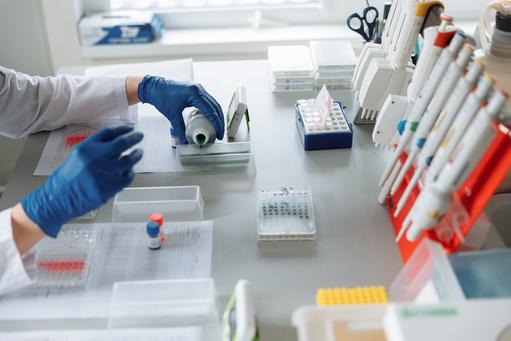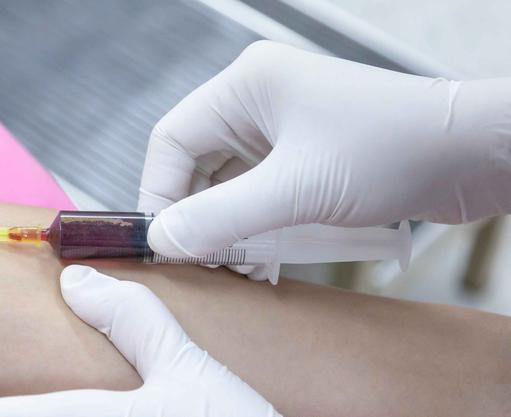Publications
- All
-
Following
You must log in
before getting
tailored content. -
Interests
You must log in
before getting
tailored content. - Most liked
- Most viewed
Directory:
Tags:

|
Directory:
Tags:

|
Directory:
Tags:

|
Directory:
Tags:

|
Directory:
Tags:

|
Publications by Dr Matthew Banks
Reviews
Banks MR
Should patients expect their colonoscopy to reach the standards experienced by bowel cancer screening patients?
Frontline Gastroenterol 2012;3:122-123
Mannath J, Banks MR
Emerging technologies in Endoscopic Imaging
F1000 Med Rep. 2012;4:3. Epub 2012 Feb 1.
Kent A & Banks MR
Functional Gastrointestinal Disorders: Diarrhea
Gastroenterology Clinics of North America. Hunt (eds),
Sept 2010;39(3):495-507
Banks M.
The modern investigation and management of gastro-oesophageal reflux disease. Clinical Medicine
2009;9(6):1-5
Burleigh DE & Banks MR
Stimulation of intestinal secretion by vasoactive intestinal peptide and cholera toxin. Autonomic Neuroscience.
2007;133(1):64-75
Farthing MJG, Casburn-Jones A, Banks MR
Diarrhoea. Prescriber 2003;14 (20):48-59.
Farthing MJG, Casburn-Jones A, Banks MR.
Getting control of intestinal secretion: thoughts for 2003.
Digestive and Liver Disease 2003;35:378-385
Banks MR, Farthing MJG.
Fluid and electrolyte absorption. Current Opinion in Gastroenterology 2001;
18 (2): 176-181.
Banks MR, Farthing MJG.
Current management of Acute Diarrhoea. Prescriber 2001;
12(12):83-93.
Banks MR, Farthing MJG.
The Management of Acute Diarrhoea. Prescriber 2000;
11(4): 97-105
Case reports
Pasha Y, Banks M.
Medical mystery: an unusual cause of anaemia
Br J Hosp Med (Lond). 2010 Feb;71(2):113.
Pasha Y, Pickard L, Cohen P, Banks MR
An unusual endoscopic diagnosis for acute epigastric pain
Scand J Gastro 2008;43(9):1151-2.
Pasha Y, White WJ, Chew NS, Banks M.
The importance of never ignoring an unexplained metabolic acidosis. Incarcerated femoral hernia. QJM.
2008 Oct;101(10):825-6. Epub 2008 Aug 28.
Green L, Banks MR
HIV associated encephalopathy, a grey case. Int J STD’s AIDS.
1995; 6: 744
Original papers
Radiofrequency ablation for early oesophageal squamous neoplasia: Outcomes form United Kingdom registry.
Rehan J Haidry, Mohammed A Butt, Jason Dunn, Matthew Banks, Abhinav Gupta, Howard Smart, PradeepBhandari, Lesley Ann Smith, Robert Willert, Grant Fullarton, Morris John, Massimo Di Pietro, Ian Penman, Marco Novelli, Laurence B Lovat
World Journal of Gastroenterology 09/2013; 19(36):6011-6019. 2.47
Radiofrequency Ablation (Rfa) And Endoscopic Mucosal Resection For Dysplastic Barrett’s Esophagus And Early Esophageal Adenocarcinoma: Outcomes Of Uk National Halo Rfa Registry.
R J Haidry, J M Dunn, M A Butt, M Burnell, A Gupta, S Green, H Miah, H L Smart, P Bhandari, L Smith, R Willert, G Fullarton, M Di Pietro, C Gordon, I Penman, H Barr, P Patel, P Boger, N Kapoor, B Mahon, J Hoare, R Narayanasamy, D O’Toole, E Cheong, N C Direkze, Y Ang, M Novelli, M R Banks, L B Lovat
Gastroenterology. 2013 Mar 28.doi:pii: S0016-5085(13)00459-9. 10.1053/j.gastro.2013.03.045
Wallace MB, Crook JE, Saunders M, Lovat L, Coron E, Waxman I, Sharma P, Hwang JH, Banks M, DePreville M, Galmiche JP, Konda V, Diehl NN, Wolfsen HC. Multicenter, randomized, controlled trial of confocal laserendomicroscopy assessment of residual metaplasia after mucosal ablation or resection of GI neoplasia in Barrett’s esophagus. GastrointestEndosc. 2012 Sep;76(3):539-47.e1. doi: 10.1016/j.gie.2012.05.004. Epub 2012 Jun 28
Dunn JM, Mackenzie GD, Banks MR, Mosse CA, Haidry R, Green S, Thorpe S, Rodriguez-Justo M, Winstanley A, Novelli MR, Bown SG, Lovat LB. A randomised controlled trial of ALA vs. Photofrin photodynamic therapy for high-grade dysplasia arising in Barrett’s oesophagus. Lasers Med Sci. 2012 Jun 15.
Banks MR, Haidry R, Butt MA, Whitley L, Stein J, Langmead L, Bloom SL, O’Bichere A, McCartney S, Basherdas K, Rodriguez-Justo M, Lovat LB. High resolution colonoscopy in a bowel cancer screening program improves polyp detection. World J Gastroenterol. 2011 Oct 14;17(38):4308-13.
Dunn JM, Banks MB, Oukris D, McKenzie GD, Thorpe S, Winstanly A, Novelli MR, Bown S, Lovat LB. Radiofrequency ablation is an effective treatment for high grade dysplasia in Barrett’s esophagus after failed Photodynamic therapy – a case series. Endoscopy. 2011 Jul;43(7):627-30
Dunn JM, Mackenzie GD, Oukrif D, Mosse CA, Banks MR, Thorpe S, Sasieni P, Bown SG, Novelli MR, Rabinovitch PS, Lovat LB. Image cytometry accurately detects DNA ploidy abnormalities and predicts late relapse to high-grade dysplasia and adenocarcinoma in Barrett’s oesophagus following photodynamic therapy. Br J Cancer 2010 May 25;102(11):1608-17
Kent AJ, Graf B, Prasad P, Banks M, Feher M. Diabetes Treatments, Gastrointestinal Symptoms and lower Gastrointestinal Endoscopy. Br J Diabetes &Vasc Dis 2009; 9: 129
Banks MR, Farthing MJG, Robberecht P, Burleigh DE. Anti-secretory actions of a novel vasoactive intestinal polypeptide (VIP) antagonist. British J Pharmacol 2005; 144: 994-1001.
Banks MR, Golder M, Farthing MJG, Burleigh DE. Intracellular potentiation between two second messenger systems may contribute to cholera toxin-induced intestinal secretion in humans.GUT 2004;53:50-57
Mulcahy HE, Kelly P, Banks MR, Connor P, Patchet SE, Farthing MJG, Fairclough PD, Kumar PJ. Factors Associated with Tolerance to, and Discomfort with, Unsedated Diagnostic Gastroscopy.Scand J Gast 2001; 36: 1352-1357
Banks MR, Kumar PJ, Mulcahy HE. Pulse Oximetry saturation levels during routine unsedated diagnostic upper gastrointestinal endoscopy.Scand J Gast 2001; 36: 105-109.
Pollock RCG, Banks MR, Fairclough PD, Farthing MJG. Dilutionaldiarrhoea – underdiagnosed and over-investigated.Europ J GastHep. 2000; 12: 1-3
Rockall AG, Lamb GM, Banks MR, Barrett SP, Al-Kutoubi MA. A prospective study of bacteraemia and bacterial contamination rates of catheters and wires during angiography.JInterventRadiol 1997; 12; 107-111.













